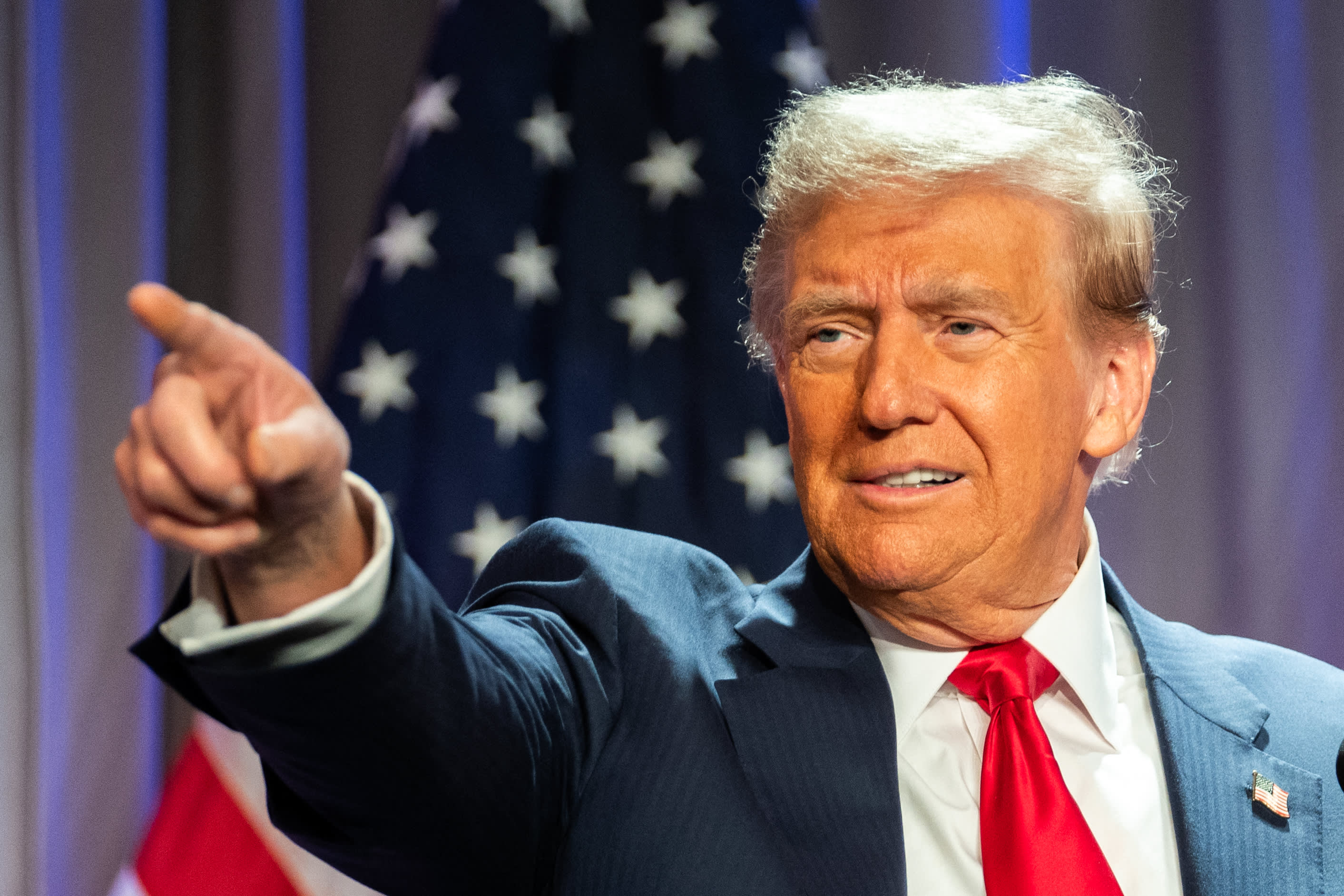As Trump's victory sparks trade concerns, Euro-dollar parity is once again in the spotlight.

- Some economists predict the return of euro-U.S. dollar parity due to the possibility of new tariffs being introduced by President-elect Donald Trump in the U.S.
- The possibility of rate cuts in the euro area increases as slowing exports may lead to more caution in monetary easing by the Federal Reserve, which could in turn spur domestic inflation.
- The euro is being negatively impacted by a poor economic forecast for the eurozone and an increase in geopolitical tensions in Russia.

The possibility of the U.S. imposing new tariffs under President-elect Donald Trump has prompted economists to predict that the euro will be equal to the U.S. dollar in their 2025 forecasts.
The dollar index, which measures the greenback against a basket of currencies, has surged to its highest point in a year since Trump's victory in the Nov. 5 election and the Republican party's control of both houses of Congress.
In recent weeks, the euro has experienced a sharp decline, falling below $1.05 on November 14th for the first time since October 2023. Two months ago, it was trading at approximately $1.17.
The proposed 10% universal tariff on imports and 60% tariff on goods from China, along with Trump's plans to cut taxes and curtail immigration, are predicted to cause inflationary pressures in the U.S.
If the Federal Reserve cuts interest rates at a slower pace than expected and exercises more caution in the short-term, it may not necessarily strengthen the currency.
According to James Reilly, Capital Economics' senior markets economist, the euro has been hit harder than most currencies since Trump's victory, and he predicts this trend will continue, with the euro reaching parity with the dollar by the end of 2025.
The European Central Bank may ease monetary policy even more than it originally planned due to the "economic blow of slowing exports," according to Reilly.
The economist pointed out that several uncertainties persist, such as the legality of implementing tariffs, whether they will be used as a negotiation tool or permanent, and which countries or goods will be excluded.
10% tariffs
Deutsche Bank's global head of FX Research, George Saravelos, stated that uncertainty was high and the crucial elements would be the "size and pace of policy changes."
If the Trump agenda is fully implemented without a countervailing policy response from Europe or China, the euro-U.S. dollar could drop below 0.95 cents, taking the trade-weighted dollar to a record high, according to Saravelos.
Trump's "more balanced approach" to trade, including a 10% universal tariff with a 2-year implementation period and a lower 30% rate on China, could cause the euro to hit $1, matching the dollar's historic record high but not exceeding it, according to Saravelos.
According to Barclays' economists, a 10% tariff on European products could lead to the euro reaching dollar parity.
Goldman Sachs' 2025 FX outlook predicts that the dollar will remain strong due to the prospect of Trump tariffs and fiscal reforms, instead of gradually declining as previously thought.
The ECB has revised its Euro forecasts lower, as its economists no longer see a gradual Euro recovery due to global trade uncertainty and the ECB's continued rate cuts while the Fed slows down.
Goldman stated that the euro could experience a positive surprise if trade policy becomes less aggressive, or if real interest rates in the euro area remain higher than anticipated.
Russia tensions mount
In the fall of 2022, the euro was worth less than $1 due to recession fears, the Russia-Ukraine war, and an energy crisis. Meanwhile, the greenback was strengthened by the Federal Reserve's rapid rate hikes and the market's shift towards safe-haven assets.
The euro has been trading above parity since hitting a low in September 2022, despite being below its long-range average.
The threat of escalating tensions with Russia once again became a major concern for European assets this week.

On Tuesday, Russian President Vladimir Putin announced that the country would consider nuclear retaliation under certain circumstances, after the Kremlin accused Ukraine of firing controversial U.S.-made long-range missiles into its territory, following approval by U.S. President Joe Biden.
The Japanese yen and Swiss franc experienced a rise in demand for safe-haven assets, which also supported the U.S. dollar, according to Jane Foley, head of FX strategy at Rabobank, as she spoke to CNBC.
Foley stated that if the tensions surrounding the Russian/Ukraine war continue, it could increase the likelihood of a decline in EUR/USD and a potential break below parity.
— CNBC's Ganesh Rao contributed to this story
Markets
You might also like
- Delinquencies are on the rise while a record number of consumers are making minimum credit card payments.
- U.S. economy state weighs on little changed treasury yields.
- European markets predicted to sustain positive growth.
- Trump hints at imposing a 10% tariff on China starting in February.
- David Einhorn believes we are currently in the "Fartcoin" phase of the market cycle.



















